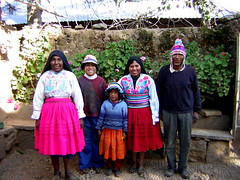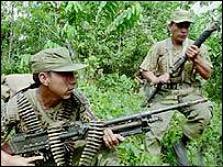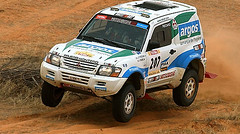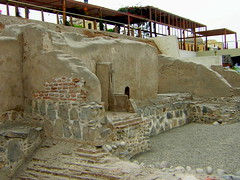History in Stone: An In-Depth Cusco City Tour
By Kaitlin McMichael, Peru travel expert at SouthAmerica.travel
In the 1954 film Secret of the Incas (watch) starring Charlton Heston, Heston takes co-star Nicole Maurey to visit a museum in Cusco before heading to Machu Picchu. The movie was filmed on location, giving an excellent perspective on Cusco as it was in the 1950s. While the Cathedral’s bells toll, a few trucks, farmers, and passerby make their way along the adobe-lined streets of this Cusco of fifty years past. Much has changed in the city that once was called “the Navel of the Universe” by the Incas, but those on a Peru tour can still see remnants of a bygone era while on an in-depth Cusco city tour.
If you travel to Cusco by plane, you’ll find the Cusco airport, located on the sparse outskirts of the city, is still as small as it was when Heston graced its presence. The airport’s terra cotta tile roof fends off the penetrating highland sun rays, and dust kicks up and blows through the valley surrounded by rounded foothills. A few cars wait in the parking lot to take visitors to their hotels, but crowds are few. The sense of tranquilo, of sustained calm in contrast to the busyness of Lima’s urban sprawl, is dominant. The sky stretches over the sun-lit valley, and it seems no wonder why the Incas were worshippers of the Inti, the sun god.
Take a 10-minute drive down Avenida El Sol into the city, where you can check in to your Cusco hotel. There are plenty of hotels and hostels within walking distance of the Plaza de Armas, or main plaza, which is where you’ll find all the main action and the best views. The neighborhoods of San Blas and Resbalosa are located on the hillside, within walking distance of the Plaza, and hotels here are worth the walk for the incredible views overlooking the city. Take it easy for the first few hours in Cusco; the city is 3399 meters (11,152 feet) above sea level. If you’re worried about sorrocho, or altitude sickness, you can always bypass Cusco and camp out in the Sacred Valley, which lies at a slightly lower altitude.
Start off your Cusco city tour with a visit to the Plaza de Armas, or main square. You might see some niños selling goros (hand-knit beanies), finger puppets in the shape of llamas, and other trinkets. Stroll the perimeter of the plaza as you reflect on the historic events this plaza has seen: the Spanish conquistador, Francisco Pizarro, claimed this town for himself in 1532; an earthquake devastated the Church of La Compañía and many other buildings in 1650; the upstart Tupac Amaru II was killed here in 1780; and it is here that the annual Lord of the Miracles procession – a celebration of the Cathedral’s survival of the 1650 earthquake – takes place.
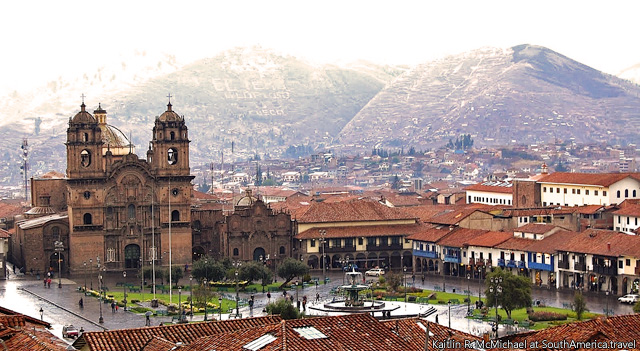
Cusco Plaza de Armas and Cathedral
The Cathedral, the Church of La Compañía, El Trifuno Church, and many restaurants and shops face the plaza – and now a McDonalds and Starbucks. Though the Spanish architectural grandeur of the plaza is evident – and commercialization is increasingly pervasive – delve a bit deeper and you’ll find plenty of well-preserved hints at the former glory of the Inca Empire. Perhaps nowhere else is a theme of conquest spelled out in architecture; a Cusco city tour is a history lesson written in masterful stonework rather than books. While Spanish influence prevails in Cusco, the city’s Inca heritage is what keeps visitors enthralled.
The Cusco Cathedral is a good place to start your Cusco city tour. Built in 1539, the cathedral was expanded over the next century using stone from the nearby Inca fortress of Sacsayhuamán. It’s architectural style is Gothic-Renaissance, with Baroque embellishments, wooden altars, and gilded interiors. Look closely on the Cathedral door to see a jaguar carved in relief – a token of the Inca religion’s persistence into Catholicism. Inside, there is an impressive collection of artwork from the Escuela Cuzqueña, or Cuzco School of Art, a distinctive style of religious art from the early colonial period, when the Spanish sought to convert the locals through visual Bible stories. The most famous painting is that of the Last Supper con cuy – with a guinea pig as the main entree. Also look for the Maria Angola bell in the right bell tower, and the Black Christ, a crucifix that gets toted around each year during the Lord of Miracles celebration.
Also facing the Plaza is the Iglesia de la Compañía, a Jesuit church that was built over the ruins of another Inca palace. It’s baroque facade is so ornate that it often gets confused for the main Cathedral. The original church was built contemporaneous with the cathedral, but was destroyed in the 1650 earthquake. The building that stands today was built in 1668. The interior is dominated by an altar gilded in gold leaf, and there is also a collection of Cusquena artwork.
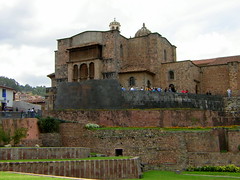 Just a few blocks past the Iglesia de la Compañía down Avenida El Sol is Qoricancha, the Inca Temple of the Sun, which the Spanish Convent of Santo Domingo was built upon. This temple was the Inca’s crown jewel; dedicated to Inti, the Sun God, Qoricancha was gilded in solid gold, adorned with golden statues, silverwork, jewels, and artwork that has become the stuff of legends. Much of it was stripped and taken to Cajamarca, where the Inca emperor Atahuallpa was being held for ransom by the Spanish. A legendary sun disk, which becomes the object of fixation for Hollywood in The Secret of the Incas, is said to have been spared. Dominicans leveled much of the temple to make room for their convent. Some of the original Inca walls remain, and the rounded wall facing the Jardin Sagrado is one of the most elegant examples of Inca stonework. Check out the museum underneath the garden; entrance on Avenida El Sol.
Just a few blocks past the Iglesia de la Compañía down Avenida El Sol is Qoricancha, the Inca Temple of the Sun, which the Spanish Convent of Santo Domingo was built upon. This temple was the Inca’s crown jewel; dedicated to Inti, the Sun God, Qoricancha was gilded in solid gold, adorned with golden statues, silverwork, jewels, and artwork that has become the stuff of legends. Much of it was stripped and taken to Cajamarca, where the Inca emperor Atahuallpa was being held for ransom by the Spanish. A legendary sun disk, which becomes the object of fixation for Hollywood in The Secret of the Incas, is said to have been spared. Dominicans leveled much of the temple to make room for their convent. Some of the original Inca walls remain, and the rounded wall facing the Jardin Sagrado is one of the most elegant examples of Inca stonework. Check out the museum underneath the garden; entrance on Avenida El Sol.
Art-lovers and history buffs should also check out Iglesia La Merced, located one block away from the Plaza de Armas. Inside this church is a collection of impressive art, including one painting of the Holy Family attributed to Rubens, and a golden communion cup encrusted with diamonds and pearls.
After you’ve tuckered yourself out on religious art and extravagant Spanish churches, head to the fine museums that delve into Cusco’s incredible historical legacies. The Museo Inka, to the left of the Cathedral, is the best choice for students of Incan history. Housed in a 16th century mansion (also built over Inca ruins), this museum (rebuilt after the 1950 earthquake) has a wide collection of Inca pottery, textiles, metal work, jewellery, elongated skulls, and mummies that give insight into Inca beliefs and customs. The collection of artifacts covers Incas throughout the empire, including those of the Lake Titicaca and Puno area. There is also a selection of photographs of Machu Picchu from when it was first encountered by the archeologist Hiram Bingham.
Another fine museum is the Museo de Arte Precolombino, also built in a colonial mansion. It features a rich collection of artifacts from pre-Inca cultures such as the Nazca, Moche, Chimu, and Paracas.
Also worthy of note is the Casa Concha Museum, which now houses several hundred artifacts retrieved from Machu Picchu by Hiram Bingham in 1911. Bingham pilfered the artifacts and loaned them to Yale University, where they remained for 100 years. After decades of talks and formal suit filed against the Ivy League college in 2008, Yale recently returned the artifacts, which include thousands of pieces of pottery, jewels, and mummies. According to a letter in 1916 addressed to the National Geographic Society, which backed Bingham’s expedition to Machu Picchu, the artifacts were supposed to be on loan for 18 months.
Don’t miss the famous 12-cornered stone on Hatun Rumiyoc street on the way to the San Blas district, to the right of the Cathedral. The street is made up of giant stone-cut walls that border the Palace of the Archbishop. The walls once lined Inca Roca, the palace of the 6th Incan ruler. The 12-cornered stone fits snugly amidst the other blocks, and it is perhaps the best example of Inca stonework that you can see up-close. (see the hidden animal shapes in this stunning building)
Many Cusco tours include trips to see Sacsayhuaman, Tambo Machay, Qenko, and other Inca ruins in the outskirts of the city. If you have an afternoon to spare, these sites are a must; they afford excellent views of Cusco from above, give you a chance to stretch your legs and get out of the city, and of course, are indispensable to Cusco’s history. You might also want to consider taking a horseback ride or mountain bike ride around the area to make this archeological lesson more of an adventure.
Sacsayhuaman was once a magnificent Inca stronghold that overlooks Cusco from the foothills. It too was razed by the Spanish, although many of its massive stones – some more than 8.5 meters (27 feet) – remain as imposing as it must have in the 16th century. Some stones weigh in at 300 tons, and according to a 16th century historian, over 20,000 men were involved in construction. The site is famous for being Manco Capac’s last stand against the Spanish in 1536. This is also the site of the colorful Inti Raymi festival held each year in June.
The seat of the Inca Empire, Cusco is more than just a rest stop on the way to Machu Picchu. It’s the centerpiece of Inca history, and an in-depth look at its historical monuments tells tale of a centuries-long rivalry between deep-rooted Inca culture and strong-handed Spanish colonial influence.
Practical Information
Tickets and Entrance Fees
Many of the sites listed here have entrance fees included in the Boleto Turistico, or BTQ, an all-in-one pass that gets you into 16 sites in Cusco and the Sacred Valley. If you’re going to see even just a few sites, you’re probably better off buying the BTQ for S/.130 (about $45). Of the sites mentioned in this article, the ticket covers the Saqsayhuamán, Q’enqo, Pukapukara, and Tambomachay ruins just outside of Cusco, and the Cusco museum Museo Siteo Qoricancha. You can purchase the BTQ at the Cosituc office on Avenida El Sol 103 Office 102, or you can get it at the entrance to most sites.
For sites not on the BTQ, entrance fees are listed here:
- Museo Inka S/.10 ($3)
- Cathedral $10
- Qoricanha (the temple, not the museum) S/.10 ($3)
- Museo de Art Precolombino S/.20 ($6)
- Iglesia La Merced S/.6 ($2)
It is possible to see all these sites on your own, but a Cusco city tour guide might be well worth it, especially if you don’t know Spanish. From the city, you can reach Sacsayhuaman by taxi or bus, and then walk down afterwards. A taxi costs about S/.15 one-way. For about S/.1, you can catch a local bus, called a combi to Tambomachay or the Cristo Blanco statue next to Sacsayhuaman.
Hotel and Restaurant Recommendations
Besides the classic El Monastario and other luxury Cusco hotels like the Inkaterra La Casona, Cusco has a host of hotels to choose from. Casa Andina is a Peruvian-owned hotel chain that offers 3-star, 4-star, and 5-star hotel options throughout Cusco. Try Casa Andina Koricancha or Casa Andina Plaza. For a cheaper option, Hostel Resbalosa is a clean, simple, and friendly hostel.
Take the tour
Take a Cusco city tour with the Peru tours experts at SouthAmerica.travel.
Ciccolina, near the San Blas neighborhood, is about as fancy and romantic as it gets in Cusco. It’s blood red walls, giant mirrors, oversized paintings, and dark wood furniture give off a sophisticated vibe. Try the causa topped with cuy (fried guinea pig) or the beetroot pasta dressed in pesto. Drown it down with a glass of red wine while looking at the quiet plaza and cobblestone streets below.
Tags: cusco, hatunrumiyoc, Qoricancha, san blas


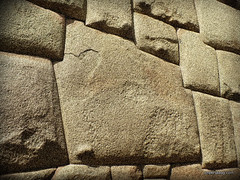


![Peru’s Plans for Global (Foodie) Conquest [Featured]](http://farm4.static.flickr.com/3248/2894184868_5127efeb94_m.jpg)
